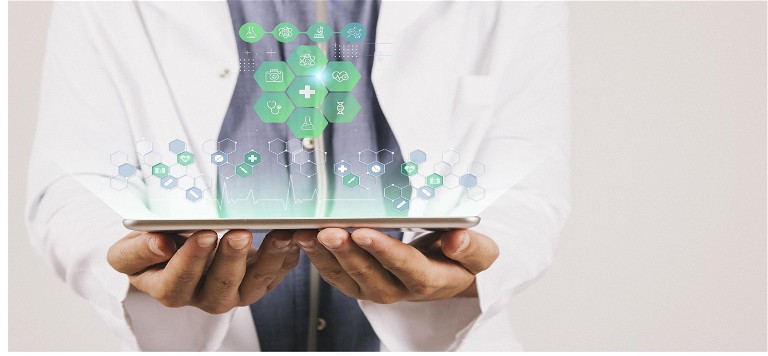Industry Insight

Connected drug delivery devices: considerations for developing digitised combination products
Michael Earl, director of Pharmaceutical Services at Owen Mumford, considers the benefits of connectivity and how this can be best utilised by pharma companies

As part of a broader industry transformation towards ‘Pharma 4.0’, pharma businesses are looking to incorporate digital features in their drug delivery products, improving efficiency while gaining market advantage.1 However, to get the most out of connectivity, companies need to take a considered and thoughtful approach.
Many pharma companies may not have defined the best way to deploy connected devices, how to use the data most effectively or how to maximise the commercial model. In this piece, we will outline essential areas pharma companies should be considering during decision-making and when outlining product development strategies.
Balancing cost with patient benefit
Reducing the burden on healthcare systems
With pharma under increased pricing pressure, there may be concerns about the cost of introducing connectivity features to drug delivery devices.2 However, there may be savings to be gained in the long term, for instance, through more effective medication delivery and reduced product wastage. For the wider healthcare system, there are also significant potential savings to be made through improved adherence – including fewer consultations, interventions or additional prescriptions.
One study found that each 10% increase in adherence among diabetes patients led to a reduction in annual healthcare costs by anywhere from 8.6-28.9%.3 With environmental, social and governance (ESG) at the top of the pharmaceutical agenda, the associated sustainability benefits are also an attractive advantage.4
Remote support for injecting patients
With remote monitoring increasingly common, connected devices can provide guidance and support for self-administering patients throughout the injection process, helping to reduce the level of device-handling errors and medication mismanagement.5 Training and demo devices with enhanced sensors can provide specific feedback to patients who are using a device for the first time or who lack confidence when using a device. As more extended-release formulations are developed, feedback from connected devices may be especially valuable.6 With patients undertaking injections less frequently, they are likely to benefit from extra support during each injection. Step-by-step guidance from connected drug delivery devices can help to ensure patients are still able to administer treatments correctly after a long period. However, pharma companies must balance the cost of device connectivity and the potential benefits for patients against the cost of injections that are infrequent or contain low-cost drugs.
Flexibility of choice in connected device selection
In terms of connectivity solutions, add-ons may have the benefit of being far simpler from a regulatory perspective than a new novel device. The flexibility to launch devices with or without connectivity depending on the market and patient group may make more sense commercially. However, creating novel devices incorporating connectivity should not be overlooked. Fully integrating connectivity into a device can ensure user needs are prioritised early in design development, whereas add-on solutions may have usability compromises. A further factor in the decision is environmental impact and how this compares with benefit and cost. To sum up, there is no ‘one-size-fits-all’ solution, as there are many factors at play.
Lastly, in terms of data capture, existing connected devices typically require a smartphone application, where data is entered manually, or which connects with the device through Bluetooth. With the advent of 5G technology, data on injection date, time, dosage and site can be instantly uploaded to the cloud without the need for patients to use a secondary device or application, providing benefits for less technically adept patients.
Maximising the use of data from connected products
Data generation for regulatory and reimbursement support
Connected drug delivery devices may be an invaluable support for pharma companies developing novel drugs, to gather adherence data and any link to patient outcomes; this in turn may support regulatory submissions and the case for reimbursement. For rare diseases, in particular, where therapeutic targets are more specific and developing an effective therapy can be challenging and expensive, tracking adherence and effectiveness of treatments is even more critical.
Assessing regulatory requirements in target markets
Currently, patient and treatment electronic data from different sources tends to be collected separately and is not easily integrated effectively within healthcare systems to develop the holistic overview necessary to create a complete knowledge base and personalised treatment plans. New regulatory standards are necessary to streamline communication protocols and tackle the challenges of combining different data sets.7
One of the main challenges is the difference in health regulations between different countries, particularly in Europe where data privacy laws differ at national and regional levels – making it challenging to launch one product in multiple markets. To avoid the cost and complications of launching different products in separate regions, pharma companies will have to assess which regions are a top commercial priority, as well as regions where the regulatory environment and healthcare system are most appropriate for connected products.
However, there are positive changes on the horizon. The EU is looking to invest €220m from 2023 to 2027 in developing the European Health Data Space. This is a cross-border digital platform where people can control their own electronic health data, ensuring data privacy, while making data more interoperable and accessible. Similarly, the UK has a plan to centralise data storage and protection, and then make this repository available remotely to clinicians and researchers.8
A new asset for clinical trials
The collection of data from connected drug delivery devices could help transform clinical trials. Connected devices may facilitate some remote clinical trials, removing geographic constraints so a more diverse patient group can be involved. This ensures device suitability for a greater number of patient groups and helps reduce healthcare inequalities. Additionally, remote monitoring during clinical trials will allow data capture through the device itself, in a much more convenient way than the alternative paper or web-based forms. During clinical trials, real-time data from connected products allows researchers to make device design changes and treatment interventions where necessary. Post launch, device data may help to detect any user-related issues that occur across the device lifetime, helping manufacturing companies to perform root cause analysis and make appropriate changes to components or device design. We are likely to see increasing use of novel technologies and sensors to capture data about device performance to further companies’ abilities to act on this data.
Intelligent planning for a connected future
The connected drug delivery devices market already measures $4.84bn and it is projected to continue expanding rapidly.9 Digital features have the potential to offer greater benefits to patients, pharma companies and healthcare providers. However, pharma companies must ensure that they have reviewed the full scope of factors related to connectivity, taking the time to ensure their selected solutions are most suited to the needs of their patient groups and the regulatory context of their target markets.
Author Bio
Michael Earl joined Owen Mumford as director of Pharmaceutical Services in November 2020. He was previously the commercial VP at Bespak, leading the commercial team to drive growth in its substantial medical devices business. Previously, he worked for a number of pharma, biotech and device companies. In a career spanning more than 35 years, he has been responsible for all aspects and stages of drug and device development and commercialisation. Michael has also completed a substantial number of commercial, licensing and M&A transactions.
References: